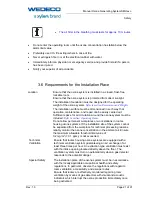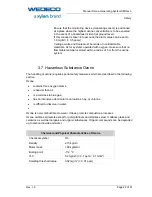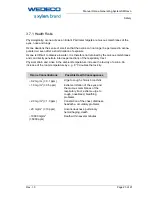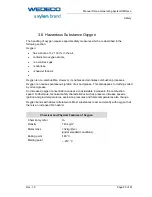
Manual Ozone Generating System SMOevo
Safety
Rev. 1.0
Page 23 of 91
3.7.1 Health Risks
Physiologically, ozone acts as an irritant. Particular targets are mucous membranes of the
eyes, nose and lungs.
Ozone deadens the sense of smell so that the ozone can no longer be perceived in ozone-
polluted air even after a short duration of exposure.
Ozone is difficult to dissolve in water. It is therefore not retained by the mucous membranes
and can directly penetrate into deeper sections of the respiratory tract.
Physical strain and a rise in the ambient temperature increase the toxicity of ozone. An
increase of the room temperature by e. g. 8°C doubles the toxicity.
Ozone Concentrations
Possible Health Consequences
0.2 mg/m
3
(
≈
0.1 ppm)
Urge to cough, chronic bronchitis
1.0 mg/m
3
(
≈
0.5 ppm)
Extreme irritation of the eyes and
the mucous membranes of the
respiratory tract, extreme urge to
cough, nosebleed, breathing
problems
2.0 mg/m
3
(
≈
1.0 ppm)
Constriction of the chest, dizziness,
headache, circulatory problems
20 mg/m
3
(
≈
10 ppm)
Unconsciousness, pulmonary
hemorrhaging, death
10000 mg/m
3
(
≈
5000 ppm)
Death within several minutes
















































